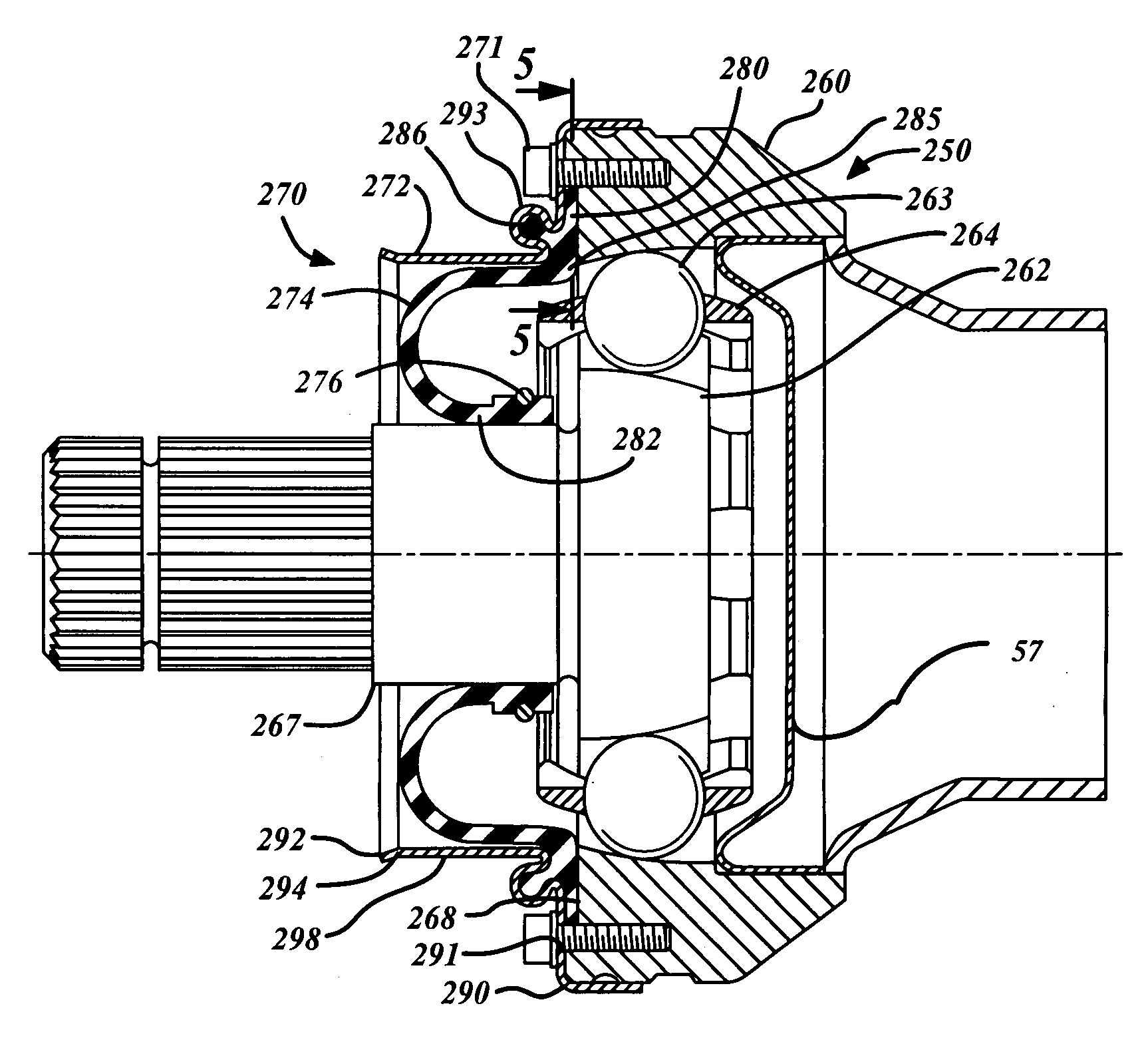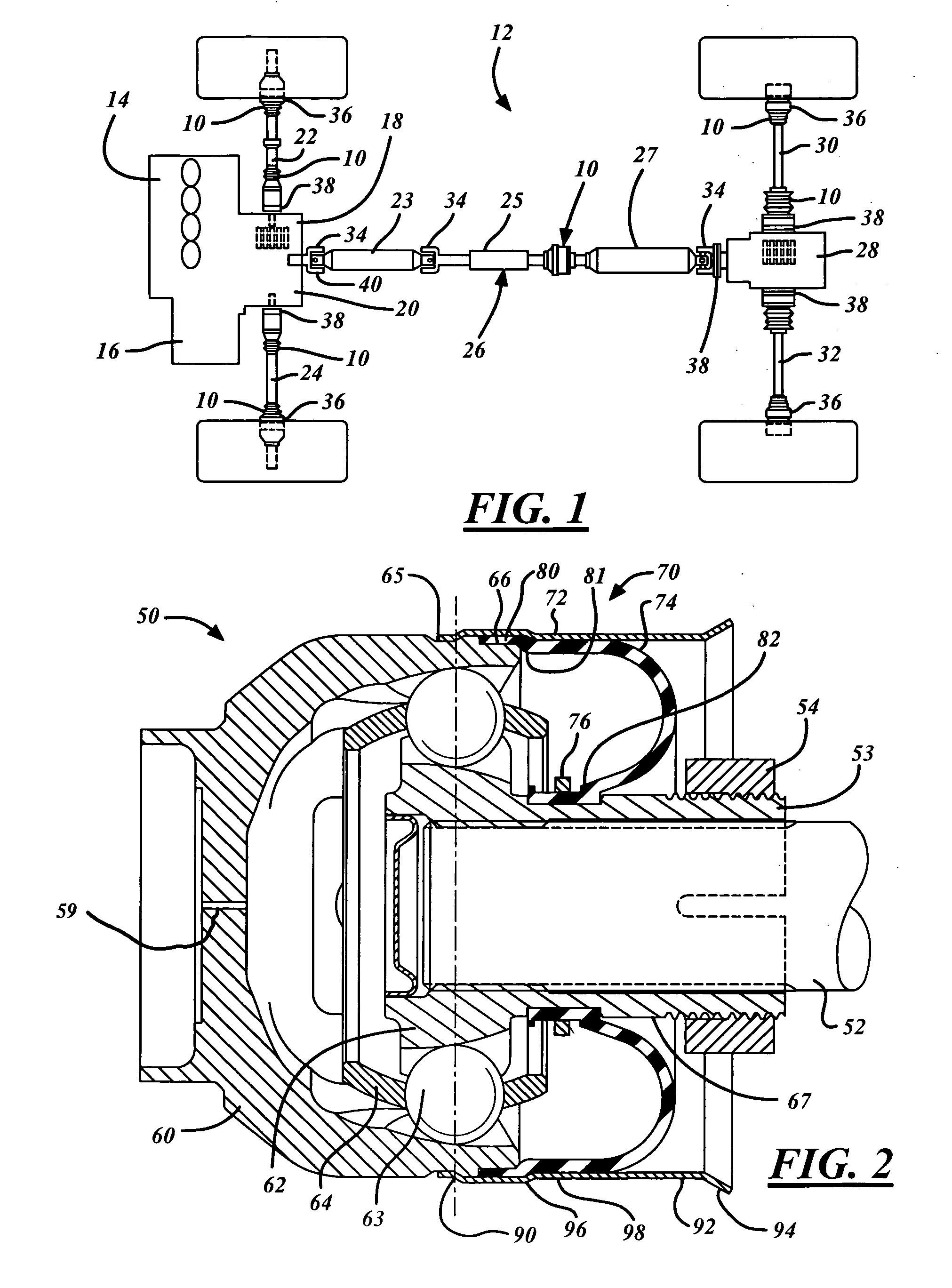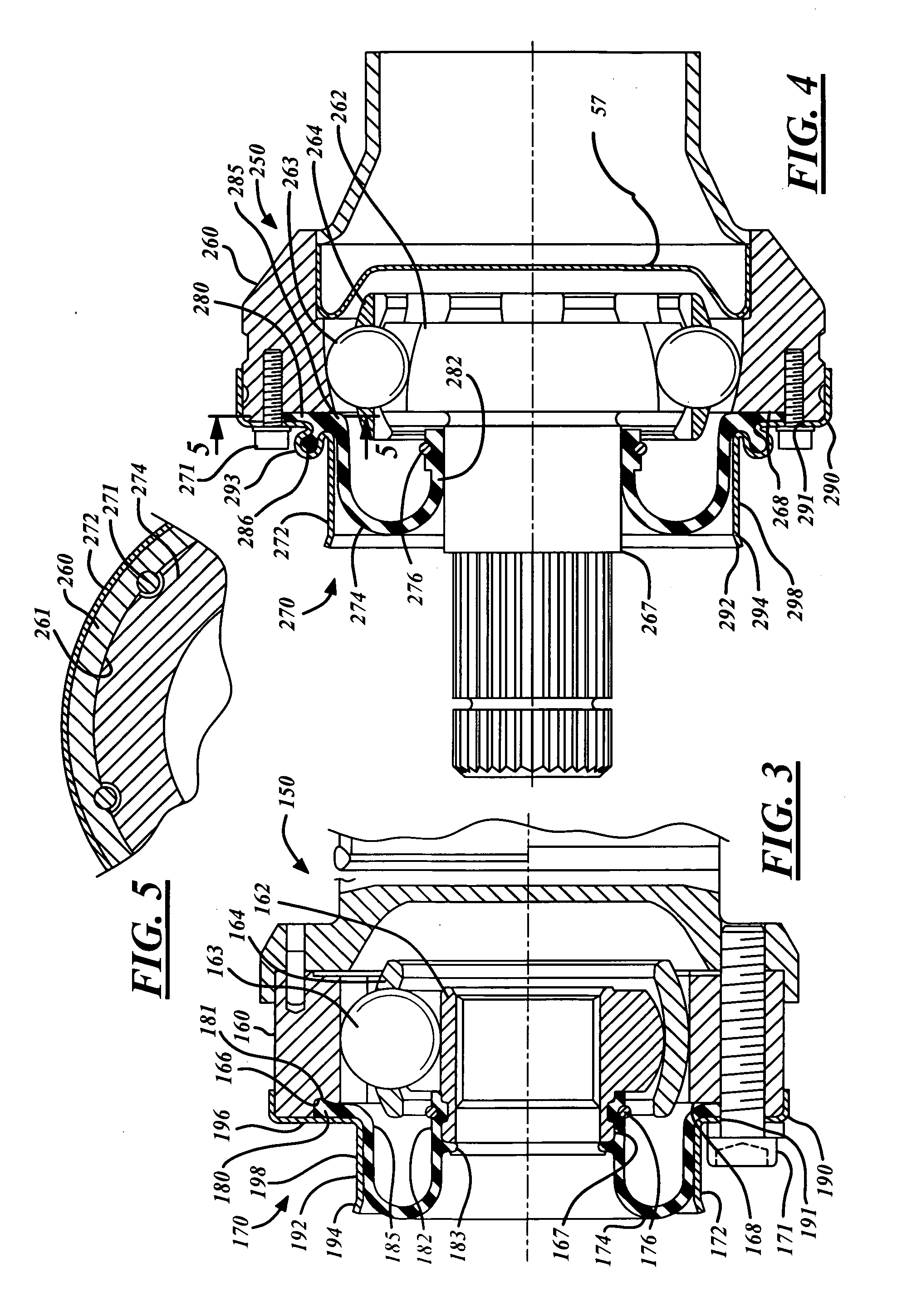Rolling boot assembly
a technology of rolling boot and assembly, which is applied in the direction of shafts, bearings, yielding couplings, etc., can solve the problems of leakage or other contamination of the joint, internal joint compromise, etc., to minimize the sensitivity to increased internal joint pressure, minimize bulging, kinking or binding of the boot, and alleviate any concerns about crimp seal connection
- Summary
- Abstract
- Description
- Claims
- Application Information
AI Technical Summary
Benefits of technology
Problems solved by technology
Method used
Image
Examples
first embodiment
[0029]FIG. 2 shows an inventive boot assembly 70 being used to advantage with a first constant velocity joint 50. The boot assembly 70 includes a boot cover or shroud 72 and a reversed internal radius diaphragm or rolling radial boot 74 that advantageously rolls outwardly from an attached CVJ 50. The boot assembly 70 is connected to a CVJ 50 for providing a protective barrier for the internal parts and lubrication retention therein.
[0030] The boot 74 includes a compression or first section 80 at one end and an attachment or second section 82 at the other end. The first section 80 of the boot 74 is connected directly to the outer joint part 60 and further retained thereto by the shroud 72. Optionally, the first section 80 of the boot 74 is attached to the shroud 72, thereby being connectable, directly or indirectly, to the outer joint part 60. The second section 82 of the boot 74 is connected to an attachment surface 67 of an inner joint part 62 by resilient retention of the boot mat...
second embodiment
[0035]FIG. 3 shows an inventive boot assembly 170 being used to advantage with a second constant velocity joint 150. The boot assembly 170 includes a boot cover or shroud 172 and a reversed internal radius diaphragm or rolling radial boot 174 that advantageously rolls outwardly from an attached CVJ 150. The boot assembly 170 is connected to a CVJ 150 for providing a protective barrier for the internal parts and lubrication retention therein.
[0036] The boot 174 includes a compression or first section 180 at one end and an attachment or second section 182 at the other end. The first section 180 of the boot 174 extends radially outward at a conforming portion 185 in that the first section 180 of the boot 174 is compressively retained directly to a front face 168 of the outer joint part 160 by the shroud 172. Optionally, the boot 174 may be compressively retained in a recess or groove 166 located on the CVJ 150. The second section 182 of the boot 174 is connected to an attachment surfac...
third embodiment
[0039]FIG. 4 shows an inventive boot assembly 270 being used to advantage with a third constant velocity joint 250. The boot assembly 270 includes a boot cover or shroud 272 and an external radius diaphragm or rolling radial boot 274 that advantageously rolls outwardly from an attached CVJ 250. The boot assembly 270 is connected to a CVJ 250 for providing a protective barrier for the internal parts and lubrication retention therein.
[0040] The boot 274 includes a compression or first section 280 at one end and an attachment or second section 282 at the other end. The first section 280 of the boot 274 extends radially outward at a conforming portion 285, allowing the first section 280 of the boot 274 to be compressively retained directly to a front face 268 of the outer joint part by the shroud 272. The second section 282 of the boot 274 is connected to an attachment surface 267 of an inner joint part 262 by resilient retention of the boot material, or by an optional retaining ring or...
PUM
 Login to View More
Login to View More Abstract
Description
Claims
Application Information
 Login to View More
Login to View More - R&D
- Intellectual Property
- Life Sciences
- Materials
- Tech Scout
- Unparalleled Data Quality
- Higher Quality Content
- 60% Fewer Hallucinations
Browse by: Latest US Patents, China's latest patents, Technical Efficacy Thesaurus, Application Domain, Technology Topic, Popular Technical Reports.
© 2025 PatSnap. All rights reserved.Legal|Privacy policy|Modern Slavery Act Transparency Statement|Sitemap|About US| Contact US: help@patsnap.com



